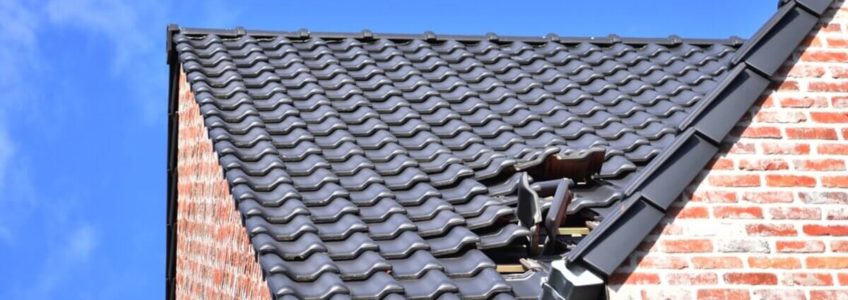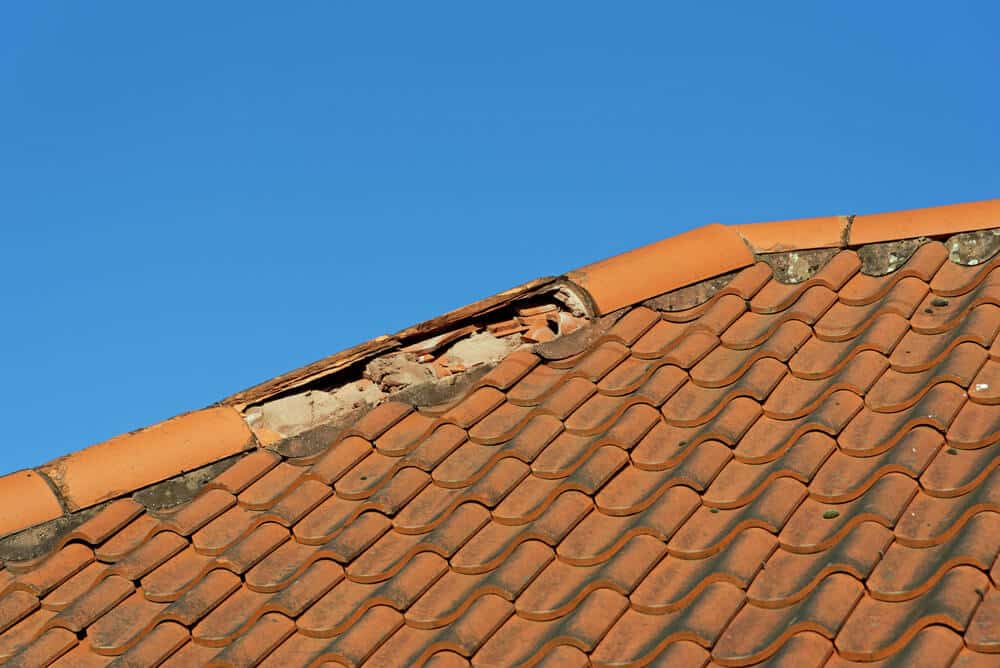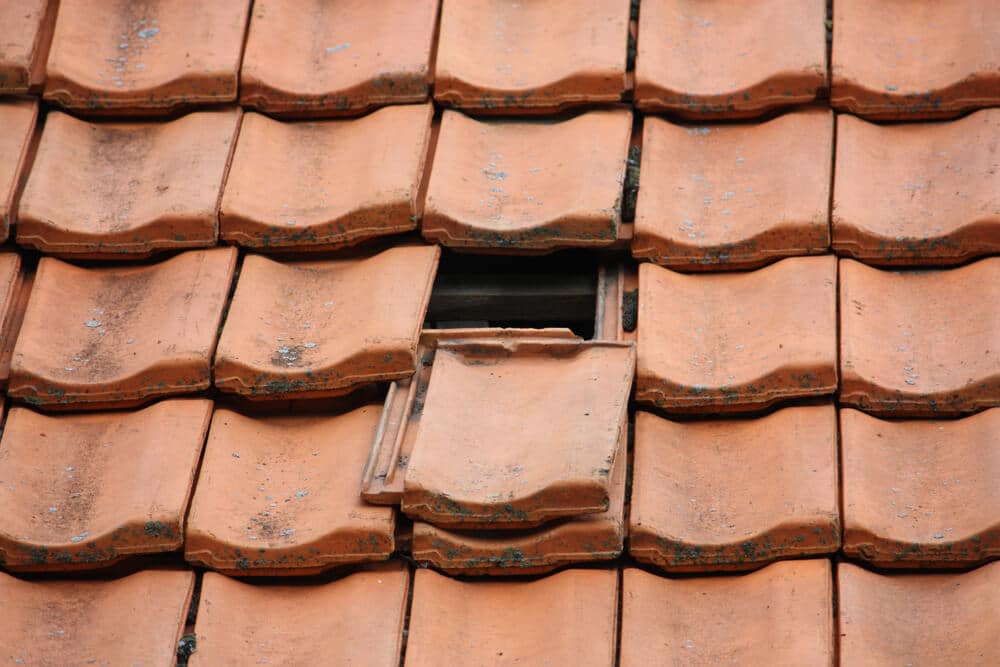
Nature’s unpredictability can sometimes result in storms that damage our homes, especially our roofs. Homeowners often struggle to differentiate between typical wear and tear and storm-induced damage. So, how does storm damage manifest on a roof? Understanding these distinctions is crucial for effective repair and ensuring the safety and durability of the roofing system.
Signs of Storm Damage on a Roof
 Understanding the difference between standard wear and storm-induced damage is essential. Storm damage typically presents unique indicators that set it apart. Let’s explore these signs.
Understanding the difference between standard wear and storm-induced damage is essential. Storm damage typically presents unique indicators that set it apart. Let’s explore these signs.
Missing or Broken Shingles
Harsh winds and flying debris can lead to shingles being torn away or damaged. This can lead to noticeable gaps or irregular patterns on the roof’s surface. If neglected, the underlying layers of the roof might get exposed to the elements, leading to further complications.
Dented or Bruised Shingles
Hail storms are notorious for causing subtle yet significant damage. If your roof has been subjected to hail, you might observe dents, bruises, or small dimples on the surface of your shingles. While these marks might seem inconsequential, they can compromise the integrity of the roofing material over time.
Granule Loss
Roof shingles are coated with granules to protect against the sun’s UV rays and to enhance their water-shedding capabilities. A storm, particularly one with heavy rain or hail, can dislodge these granules. If you notice an accumulation of granules in your gutters or downspouts, it could be a sign of storm damage.
Beyond Shingles: Other Roofing Components At Risk
It’s not just the shingles that bear the brunt of a storm. Other roofing components can also get compromised.
Damaged Flashing and Vents
Flashings, which are metal pieces used to prevent water infiltration at roof joints and edges, can get bent or torn due to strong winds. Similarly, roof vents might get clogged, dented, or cracked during a storm, impairing their functionality.
Gutters and Downspouts
Heavy rainfall combined with debris can cause gutters and downspouts to get clogged, bent, or even detached. It’s essential to inspect these components post-storm to ensure efficient water drainage.
Internal Signs of Storm Damage
While most homeowners focus on the external signs, it’s equally important to keep an eye out for internal indicators. These signs often hint at a more severe, underlying issue.
Water Stains and Leaks
Post-storm, if you notice wet spots, dripping water, or unexplained stains on your ceilings or walls, it’s an indication that your roof might have sustained damage. These internal cues are a call for immediate action to prevent mold growth and structural damage.
Drafts and Temperature Fluctuations
Unexplained drafts or significant temperature fluctuations in certain rooms might indicate gaps or holes in the roofing structure caused by storm damage.
Conclusion
 While we cannot control nature’s fury, we can undoubtedly take preventive measures to minimize potential damage. Regular roof inspections, choosing high-quality roofing materials, and staying informed about what storm damage looks like on a roof are steps in the right direction. After all, a well-maintained roof is your home’s first line of defense against the elements.
While we cannot control nature’s fury, we can undoubtedly take preventive measures to minimize potential damage. Regular roof inspections, choosing high-quality roofing materials, and staying informed about what storm damage looks like on a roof are steps in the right direction. After all, a well-maintained roof is your home’s first line of defense against the elements.
If you have concerns about your roof’s condition or need guidance on preventative measures, don’t hesitate to contact us. Our team of experts is here to provide advice, assessments, and solutions tailored to your specific needs. Contact Advantage Construction today to learn more about what storm damage looks like on a roof.
